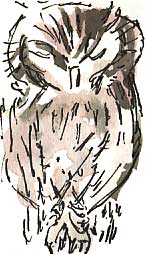
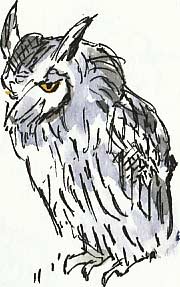
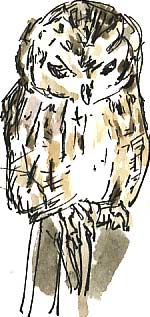
Richard Bell's nature diary, Northumbria, Thursday 23 September 2010



I’M USED to drawing owls, hawks and eagles in the birds of prey section of the zoo but it’s a whole new experience for me to see them in flight at close quarters – at very close quarters; a tawny owl brushed my face with its wing as it flew past me - here at the Kielder Water Birds of Prey Centre at Leaplish.

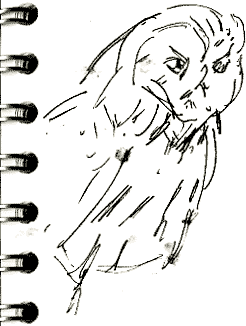
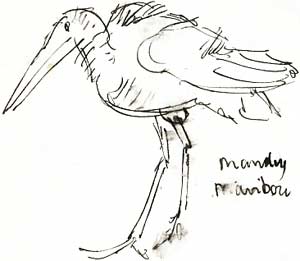 Seeing
them in
action you
get a much
better impression
of an individual
bird’s
character
than you
do when
they’re
simply sitting
on a perch.
The father
and son
team who
run the
Centre describe
them all
as individuals
but I think
a special
favourite
is Mandy
the Maribou,
who is a
real character.
Recently
a dentist
repaired
her broken
bill by
fitting
her with
a plastic
extension
to her lower
mandible.
She can
now pick
up tiny
bits of
food from
the floor,
just as
she could
before her
bill was
damaged.
Seeing
them in
action you
get a much
better impression
of an individual
bird’s
character
than you
do when
they’re
simply sitting
on a perch.
The father
and son
team who
run the
Centre describe
them all
as individuals
but I think
a special
favourite
is Mandy
the Maribou,
who is a
real character.
Recently
a dentist
repaired
her broken
bill by
fitting
her with
a plastic
extension
to her lower
mandible.
She can
now pick
up tiny
bits of
food from
the floor,
just as
she could
before her
bill was
damaged.
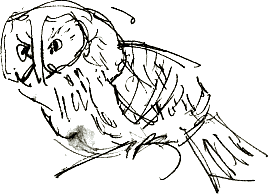
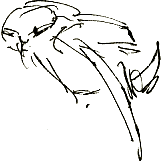
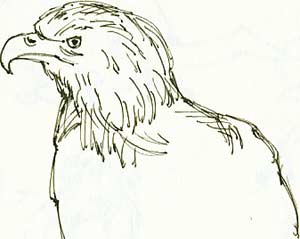 It’s
wonderful
to have
the birds
come to
your hand
to see the
way the
feathers
work; they're
so light
that you
can appreciate
how much
their bulk
is made
up of feathers
–
even a great-grey
owl weighs
less than
the leather
gauntlet
you wear
for them
to land
on. Owls
were my
favourite
subject
when I started
doing wildlife
drawings
as a young
student
and I’d
build up
the detailed
pattern
of the feathers
with a fine-nibbed
dip pen.
Being amongst
these I
realise
that stuffed
specimens,
detailed
photographs
or even
the bored-looking
birds that
inhabit
aviaries
don’t
give a true
picture
of the living,
breathing,
flying bird.
It’s
wonderful
to have
the birds
come to
your hand
to see the
way the
feathers
work; they're
so light
that you
can appreciate
how much
their bulk
is made
up of feathers
–
even a great-grey
owl weighs
less than
the leather
gauntlet
you wear
for them
to land
on. Owls
were my
favourite
subject
when I started
doing wildlife
drawings
as a young
student
and I’d
build up
the detailed
pattern
of the feathers
with a fine-nibbed
dip pen.
Being amongst
these I
realise
that stuffed
specimens,
detailed
photographs
or even
the bored-looking
birds that
inhabit
aviaries
don’t
give a true
picture
of the living,
breathing,
flying bird.
Between the flight demonstrations I get a chance to draw three of the smaller owls in more detail. These birds have all been captive bred and raised by humans so that they’re totally at ease with people; ‘They think that they’re humans or that we are owls.’

To raise birds for release into the wild would be a different process.
As we’re talking one of the falconers dashes out of the shelter, looks up and says ‘Oh, it’s a pair of buzzards.’ He’d seen the kookaburra looking up. When we came out we couldn’t see the buzzards but all we had to do was look at the kookaburra again and follow in which its beak was pointing and in which its large, round yellow eyes were staring and there they were, circling.
The falconer says that this is something to look out for with garden birds; if you see them looking up, look for a predator.
During the first demonstration two peregrines had flown across, taking an interest in one of the Centre’s hawks flying around below.